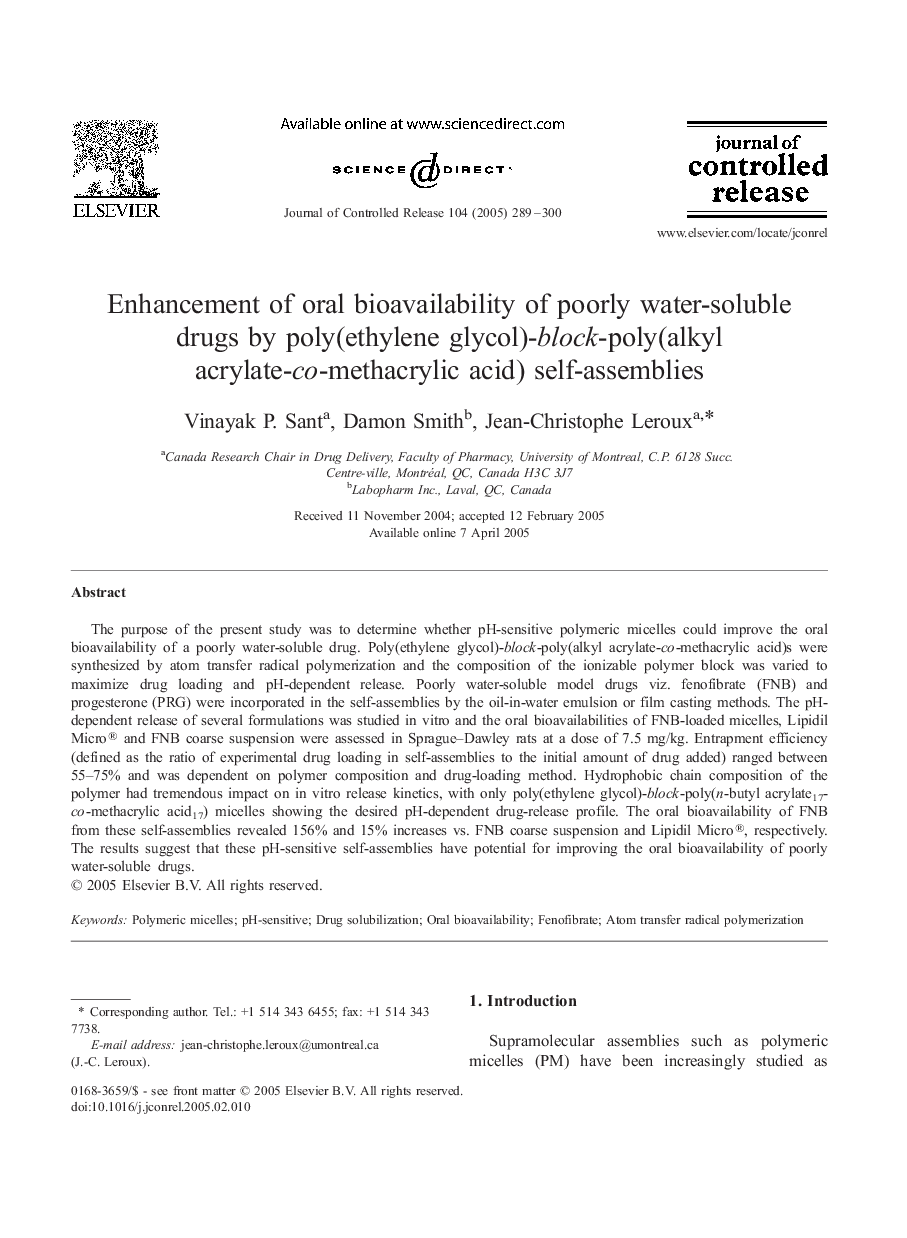| Article ID | Journal | Published Year | Pages | File Type |
|---|---|---|---|---|
| 10613507 | Journal of Controlled Release | 2005 | 12 Pages |
Abstract
The purpose of the present study was to determine whether pH-sensitive polymeric micelles could improve the oral bioavailability of a poorly water-soluble drug. Poly(ethylene glycol)-block-poly(alkyl acrylate-co-methacrylic acid)s were synthesized by atom transfer radical polymerization and the composition of the ionizable polymer block was varied to maximize drug loading and pH-dependent release. Poorly water-soluble model drugs viz. fenofibrate (FNB) and progesterone (PRG) were incorporated in the self-assemblies by the oil-in-water emulsion or film casting methods. The pH-dependent release of several formulations was studied in vitro and the oral bioavailabilities of FNB-loaded micelles, Lipidil Micro® and FNB coarse suspension were assessed in Sprague-Dawley rats at a dose of 7.5 mg/kg. Entrapment efficiency (defined as the ratio of experimental drug loading in self-assemblies to the initial amount of drug added) ranged between 55-75% and was dependent on polymer composition and drug-loading method. Hydrophobic chain composition of the polymer had tremendous impact on in vitro release kinetics, with only poly(ethylene glycol)-block-poly(n-butyl acrylate17-co-methacrylic acid17) micelles showing the desired pH-dependent drug-release profile. The oral bioavailability of FNB from these self-assemblies revealed 156% and 15% increases vs. FNB coarse suspension and Lipidil Micro®, respectively. The results suggest that these pH-sensitive self-assemblies have potential for improving the oral bioavailability of poorly water-soluble drugs.
Keywords
Related Topics
Physical Sciences and Engineering
Materials Science
Biomaterials
Authors
Vinayak P. Sant, Damon Smith, Jean-Christophe Leroux,
